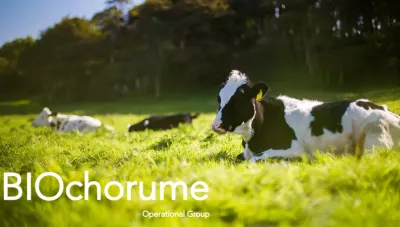General information
RDP Priority
- P5. Resource efficiency and climate
RDP Focus Area
- 5C: Renewable sources & waste management
RDP Measure
- M16: Cooperation
Summary
In ‘Entre Douro e Minho’, a region in northern Portugal, intensive dairy farming is of vital social and economic importance but it produces large amounts of effluent, posing potentially serious environmental risks. An agri-food firm seeking sustainable and locally sourced solutions for improving their tree production wanted to know if dairy farming effluents could be used as fertiliser in forestry. CAP-funded research explored this with an aim to convert the problem of effluent into an opportunity of economic and environmental value.
Results
Positive research results showed:
- There were no negative effects in the soil from the use of manure in any of the test treatments.
- The leachate did not show nitrate values that could indicate a contamination risk for aquifers.
- The biometric data of the trees showed positive yet varying responses between the two species when the amount of manure used changed.
- The quality of the composition of the biomass was not affected by the different treatments.
- The research showed that the digestibility, chemical and microbiological composition of Paulónia leaves makes them suitable as forage.
- The use of manure in forest systems offers an alternative to chemical fertilisation and offers a viable solution to avoid the uncontrolled disposal of effluent that could potentially cause pollution and harm.
- The research findings were published in five scientific articles and one report presented in 2022.

Promoter
AVELEDA, S.A.*
* The Project promoter/beneficiary is an EIP-AGRI Operational Group (https://ec.europa.eu/eip/agriculture/en )
Funding
Total budget 319 588 (EUR)
EAFRD 239 691 (EUR)
National/Regional 79 897 (EUR)
Ressourcen
Context
In ‘Entre Douro e Minho’, a region in northern Portugal, intensive dairy farming is of vital social and economic importance but this type of farming also produces large amounts of effluent such as leachate (a mixture of urine, faeces and water from different sources). These substances carry high levels of chemicals, trace minerals and pathogenic microorganisms posing potentially serious environmental risks. At the same time, effluent is considered beneficial for soil, adding organic matter, nutrients and improving soil structure, thereby fostering plant growth. Yet, the amount of effluent produced is a challenge.
In 2017 AVELEDA S.A., a diversified wine making company based in Penafiel, was looking for sustainable and locally sourced solutions for improving their tree production line. When their attention turned to the prevalence of dairy farming in their region, the idea was thought up to address the challenge of effluent and turn it into an economic and environmentally beneficial opportunity for forest management. An innovative model was needed to ensure that the solution would be based on a "circular economy" and "zero waste” approach and that it would be manageable for the dairy farms.
The EIP-AGRI Operational Group Go-Biochorume was born and the project leader, AVELEDA S.A., was joined by public and private partners, including: The National Institute of Agricultural and Veterinary Research (INIAV), The Portuguese Catholic University - School of Biotechnology (UCP-ESB), The National Federation of Cooperatives of Milk Producers (FENALAC) and the Forest Association of Portugal (FORESTIS).
Objectives
The project had the following key objectives to:
- Monitor and evaluate the annual development of the physical and chemical characteristics of the soils and the carbon reservoir rates in test units.
- Focus on nutrient extraction, biomass production and resistance to diseases and pests.
- Use two fast growing, deciduous hardwood tree species (Paulwonia spp and Populus spp) and demonstrate their ability to extract nutrients from the soil, in soils with manure application.
- Test the useability/manageability of the approaches researched on livestock farms.
- Explore the economic effects of the approaches researched.
Activities
The project involved the following activities:
- Research and analysis in line with the study objectives:
- Evaluate the increases in woody production, leaf aerial biomass and energetic characteristics of these species with the application of slurries.
- Analyse the chemical, organic and forage composition of Paulownia sp. for use as a food supplement for animals.
- Analyse the integration of the research findings and activities on livestock farms and how the knowhow developed by the project will meet their needs.
- Evaluate the economic results of the research with the introduction of a new model.
- Implementing four webinars (INIAV, 2021 here; AVELEDA, 2021 here; School of Biotechnology – UCP, here; GO “BIOCHORUME" webinar).
- Presentations and demo sessions (FORESTIS and FENALAC here; FORESTIS, FENALAC and AVELEDA here, FORESTIS here).
- Producing newsletters (here and here).
- Reporting of research findings.
Main results
The specific research results were obtained:
- There were no negative effects in the soil from the use of manure in any of the test treatments. On the contrary, only positive effects were reported in relation to the enrichment of organic matter.
- The leachate did not show nitrate values that could indicate a contamination risk for aquifers.
- The biometric data of the trees showed varying responses between the two species when the amount of manure used changed. However, in each case there was a significant positive effect.
- The quality of the composition of the biomass was not affected by the different treatments.
- The research showed that the digestibility, chemical and microbiological composition of Paulónia leaves makes them suitable as forage.
- The use of manure in forest systems offers an alternative to chemical fertilisation and offers a viable solution to avoid the uncontrolled disposal of effluent that could potentially cause pollution and harm.
The research findings were published as follows:
Key lessons and recommendations
- Whilst focusing on the specific research aims, it is worthwhile keeping an open mind and wider perspective as this can lead to additional insights. For example, Paulónia wood, compared to Poplar wood, presents lower density values: an aspect that is compensated by its much higher productivity and lower ash, nitrate and sulphur contents. This makes it a very interesting species for biofuel production.
